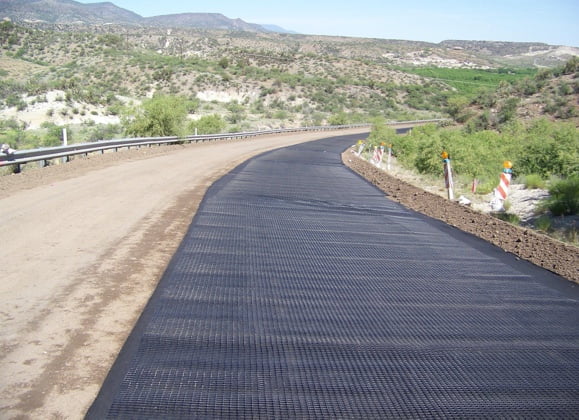
Road Stabilization & Sustainable Transportation Infrastructure
More cost-effective and efficient pavement construction solutions
From major highways to heavy-duty haul roads, Tensar's geogrid technology and asphalt reinforcement technology are proven solutions that decrease construction and material costs, increase pavement life, and reduce maintenance and rehabilitation.
Geogrids are commonly used to stabilized poor soils during sitework. In pavement structures, Tensar geogrids create a “snowshoe effect” over the underlying subgrade by locking aggregate particles more efficiently during compaction, stiffening granular materials and reducing subgrade stress. Asphalt interlayers provide the function of reinforcement, waterproofing, and/or reflective crack mitigation to extend maintenance intervals.
Applying geosynthetics and geogrids in road construction results in more sustainable transportation infrastructure. Not only will roadways withstand everyday use, but also severe weather events and the increasing impact of challenging environmental conditions.
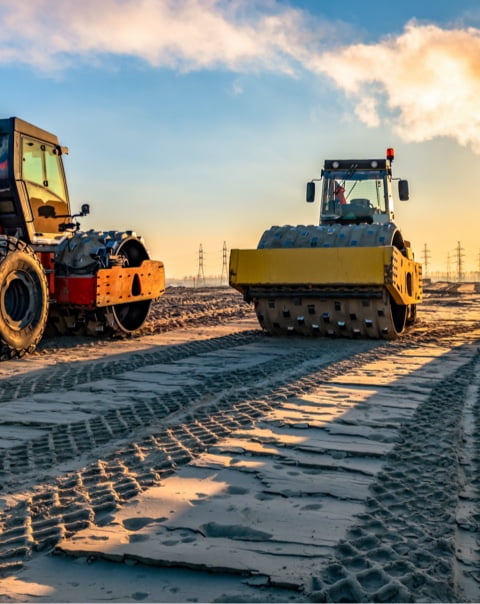
Unpaved, Haul, Access, & Gravel Roads
Weak subgrades pose the greatest challenge to the performance of an unpaved access or haul road. Left untreated, a weak subgrade subjected to continuous heavy traffic will quickly deform, causing the road surface to rut, pothole, “washboard,” and ultimately deteriorate beyond use. Tensar geogrids aggregate interlock and create a mechanically stabilized layer (MSL) to evenly distribute the load, increasing bearing capacity and ensuring longer-term stability and performance.
Flexible Pavement Roads
Flexible pavement structures often fail prematurely because of progressive lateral and vertical displacement and a weakening of the aggregate base course. When used in pavement construction, Tensar geogrids improve the overall stiffness of the structures that support traffic by confining and interlocking with aggregate to create a mechanically stabilized layer (MSL). This leads to enhanced performance by minimizing maintenance and rehabilitation intervals common to flexible pavements. By decreasing aggregate fill requirements, additional truck deliveries are avoided, resulting in a more resilient solution with a smaller carbon footprint.
In addition, reflective cracking is one of the largest contributors to flexible pavement deterioration. Hot mix asphalt (HMA) pavement reinforcement can be installed to become the hidden strength in the road or other paved surfaces. Since a stiff tensile element is at the bottom of an overlay, pavement performance is drastically improved and ultimately maintenance and life cycle costs are reduced.
Rigid Pavement Roads
Tensar geogrids can help you build stronger, longer-lasting rigid pavements. Building a rigid pavement structure with a geosynthetic layer will reduce deformation better than extremely thick aggregate base sections. This enhanced pavement design creates a more uniform and resilient pavement structure.
Most long-term performance problems with concrete pavement are a result of poorly performing joints. Poor load transfer creates high slab stresses, which contribute heavily to distresses such as faulting, pumping, and corner breaks. Geogrids interlock with and confine the aggregate base, resulting in less deformation during construction as well as throughout the pavement’s life. The confinement also reduces the potential for contamination of the aggregate base with the subgrade soil. The geogrid and aggregate base together create a mechanically stabilized layer (MSL), which minimizes potential for the differential movements of the concrete surface that initiate faulting and corner breaks.
Working Surfaces
Crane pads, laydown yards, storage facilities, and other working surfaces often support heavy, sustained loads. When poor subgrade soils are underneath these structures, the surface will quickly degrade beyond use if left untreated. Adding additional aggregate is a common, yet very expensive solution that is only a short-term fix. A mechanically stabilized layer (MSL) formed of multiple layers of Tensar geogrid can easily support these heavy loads. Less aggregate is required, making the construction of these surfaces more affordable by reducing up-front costs. The MSL also improves site access and reduces future maintenance.
Parking Lots
Construction projects with large paved areas often encounter weak, wet subgrades that are not suitable to build on. Tensar geogrids interlock with aggregate and create a mechanically stabilized layer (MSL) to evenly distribute the load, increasing bearing capacity and ensuring longer-term stability and performance. In addition, pavement interlayers can be installed to combat reflective cracking and reduce maintenance.
Many large, paved areas are designed with varied pavement thicknesses directly adjacent to one another. This can cause design, construction, and maintenance problems, most significantly when water entering the pavement accumulates in the “bathtub” created by the thicker heavy-duty section. The subgrade strength decreases and the base becomes saturated, resulting in a weaker pavement in the area where the greatest strength is required. Tensar geogrid allows the site to be graded to one level, avoiding the potential for migration of water into low-lying areas and reducing freeze-thaw susceptibility under heavy-duty pavements.
Concrete Pavers
As with many other surface applications, Tensar geogrids can be used to stabilize weak subgrades underneath concrete pavers. Whether it’s a light-duty road or a sidewalk, geogrid prevents shifting pavers and reduces the need for maintenance over time.
For residential applications, Tensar offers the AmeriGrid™ line: easy-to-handle, lightweight rolls. AmeriGrid rolls are easy to cut in the field, making it simple to adapt to curves and projections. A simple overlap is sufficient for adjacent rolls, and no sewing is required. Our products are 100% UV resistant and will not rust, leach, or degrade in direct sunlight.
Success Stories
Building Pavements
Pavement engineers are often charged with delivering a high-performing design on a small construction budget. With client expectations increasing and roadway maintenance budgets steadily declining, "miracle worker" has become a major part of the job description. It's obvious that conventional design methods are no longer cutting it. However, forward-thinking engineers are gaining traction with a pavement optimization strategy that delivers the best-performing roads for the lowest cost. Tensar gives you the ability to adjust your design and choose what’s right for your project.
Optimize for Initial Cost
Get the original design life but save on initial costs by significantly reducing the pavement thickness.
Optimize for Lifecycle Cost
Pay more upfront on the construction but greatly reduce lifecycle cost. This option uses the same pavement thickness.
Optimize for Pavement Performance (Cost-Neutral)
Get significantly longer performance compared to the original design life and pay the same initial cost. With this option, you are able to slightly reduce the pavement thickness.
Geogrids & Geosynthetic Road Construction Products & Systems
There are no results that match your search. Please try another search or Contact Us with further questions.
Design with confidence with geotechnical engineering, from anywhere.
- Design & evaluate pavement and gravel sections, working platforms, sub-ballast sections & more
- Easily compare alternative materials
- Determine initial and lifecycle cost savings, time savings, and sustainability metrics
- High-level summary of the design alternatives for project stakeholders
- Sharing features that aid collaboration

Resources
Balancing Budget and Performance: Smart Soil Solutions with H-Series Geogrid
Geogrids aren’t a one-size-fits-all solution. Learn about the suite of options available and how H-Series geogrid can balance cost...Risk and Value in Early-Stage Construction
(Duration 1 hour // 1 PDH Credit)The success and profitability of construction projects depend on the contractor’s ability to manage risks and...Unlock Longer-Lasting Pavements
(Duration 1 Hour // 1 PDH Credit) Discover how interlayers can fit into your pavement maintenance program to dramatically improve pavement...Your Regional Sales Manager
Your Inside Sales Manager
Your Local Distributor
There are no results that match your search. Please try another search or Contact Us with further questions.




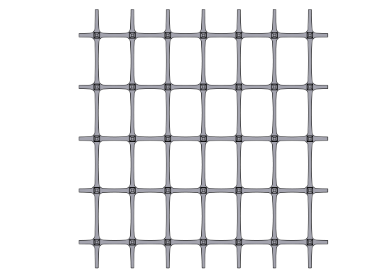
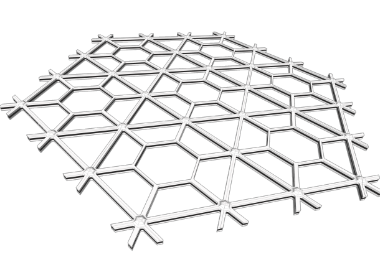




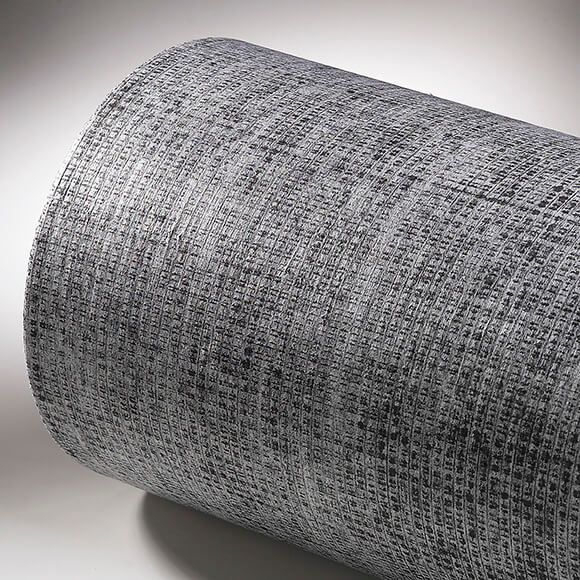
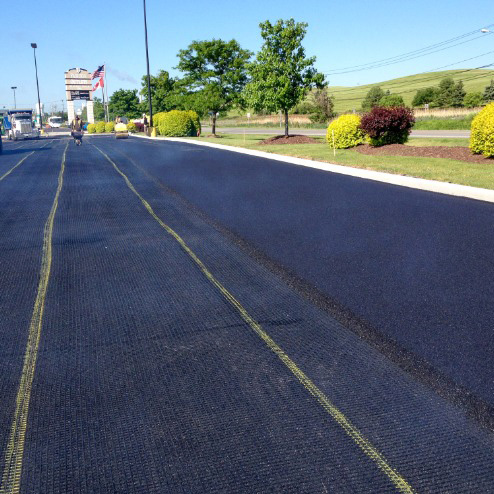
.png)